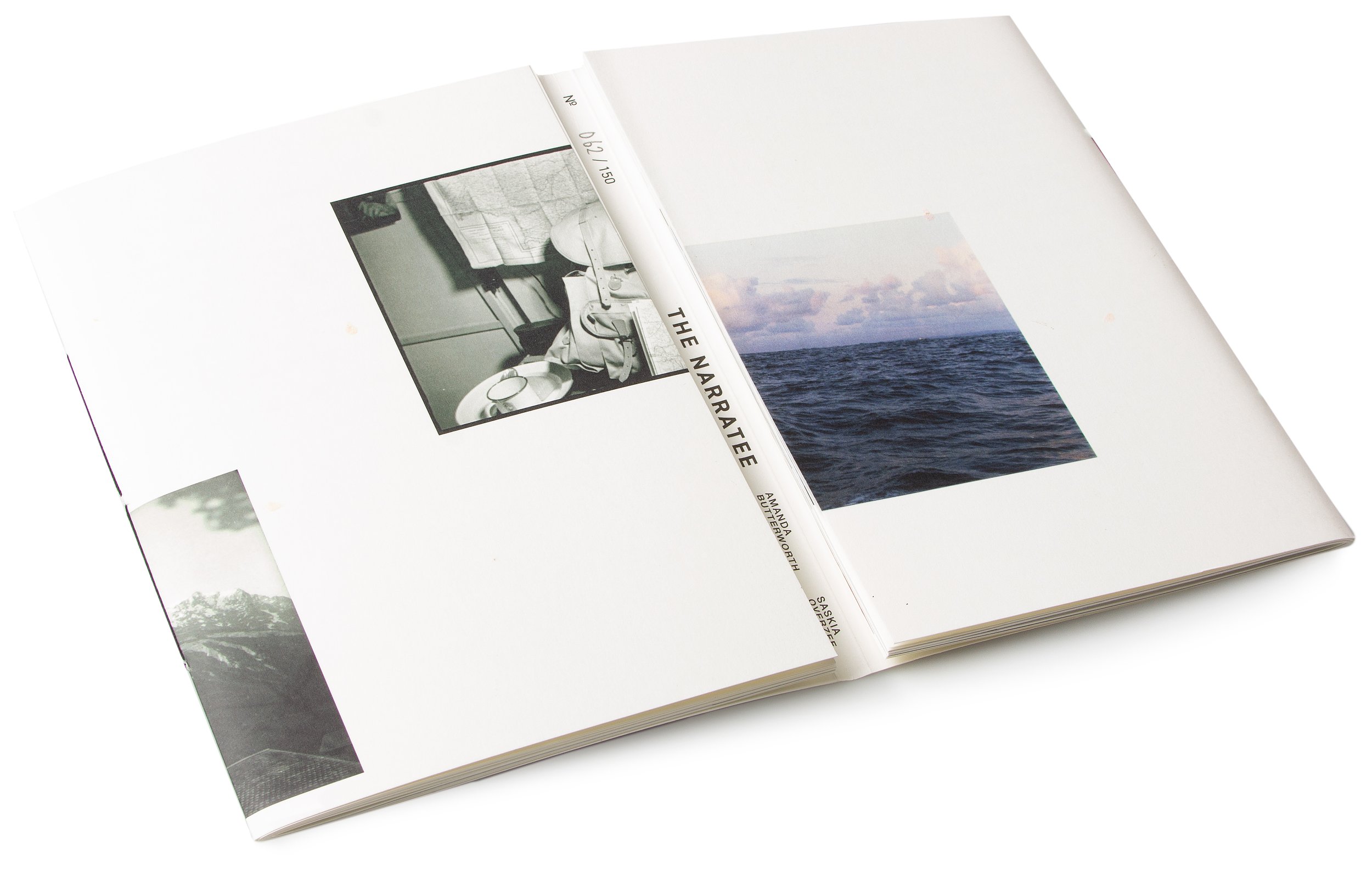Saskia Overzee & Amanda Butterworth
Saskia Overzee & Amanda Butterworth
The Narratee
104 pages
Soft Cover
150 x 200 mm
2018
About the Book:
Last year Saskia and Amanda simultaneously found a box “in the attic”. Saskia encountered a box filled with postcards, letters, slides and pictures from her dad Jan who died in 2017. Amanda found a box filled with slides, logbooks and snapshots of unfamiliar faces from her dad Brian who died in 1994 when she was only 14 years old. Saskia had her father around for a long time, Amanda on the other hand for a short time. Still both knew so little about the time before they were born. What was he like? What did he do? We both remember fragments of stories and with all that material we started to make A story. THE story remains unknown. The publication consists of two untold stories and thus two books that can be read simultaneously. The stories are very different yet sometimes look strangely the same.
Book review by Joe Cuccio |
Saskia Overzee and Amanda Butterworth collaborated to create The Narratee which takes fragments of their fathers’ lives to formulate stories for each of the respective fathers. These stories are derived from found materials their fathers’ had left behind, and both Overzee and Butterworth are grasping at the parts of their fathers’ lives that were untold to them.
Simultaneously the two creatives discovered these materials that had been tucked away and aimed to make something of the postcards, snapshots, slides, letters, logbooks, and other things they had found. Each artist had different relationships with their father; Overzee’s father passed in 2017 and Butterworth’s father had been gone since 1994. Despite the gap in time spent with their respective fathers’ prior to their passing, both artists felt that there was more to learn about the lives that their fathers’ had led. These artists’ understanding of the adventures that their fathers’ had embarked upon was limited, and they used the vernacular materials left behind to create stories about the lives of their beloved family members.
What is fascinating from the start of viewing this book is the title and cover; the audience immediately gains an understanding that what we are about to view is a story not told by the narrator, but rather by the narratee, who is intended to listen to the stories being told. Both artists are aiming to piece together the lives of their fathers’ after they are long gone. It is an intriguing way to revive their lost parents and create a narrative through the lens of these artists.
The way the book is structured is that two stories are told simultaneously. The book opens up directly in the middle of all the pages and brings the viewer to the start of the two stories at an unconventional point. On the left side, we have the story of Jan (Saskia Overzee’s father) and on the right side, we have the story of Brian (Amanda Butterworth’s father). The book has gatefolds on each side that reveals the story of each man. While navigating the book the viewer can choose to look at one story at a time or open it up to have four pages spread across telling both Jan’s and Brian’s stories.
The use of repetitive phrases implemented by these collaborators throughout the stories of each man ties the two vastly different stories together. Phrases like ‘there are few places where you have a direct view on things that pass’ and ‘when you’d squint your eyes, the clouds could almost pass as mountains’ are used in both stories and gives better insight into the vernacular materials being used. Phrases such as these allow the viewer to ponder on what exactly they are looking at. The use of these vernacular materials is not so clean cut and dry. Images are cropped to reveal only a sliver of itself and some images encompass a full two-page spread but are masked by a smaller page in between to split one photograph into two. There are even instances where a collage of materials is created to tell a piece of the two stories in its own way. The structure from page to page never allows for a dull moment throughout the viewing of this piece of art.
Overall this book was unlike anything I had ever interacted with before. It is a collaboration that felt so evenly weighted between both artists and tied together two different people’s lives so tightly through the use of powerful words and the structure of the book itself. I would recommend anyone who is interested in the use of vernacular materials within art go and purchase this book, and even those who are not intrigued by this should engage with this masterful work. It holds the attention of the viewer through its calculated placement of materials throughout and keeps the audience excited.







